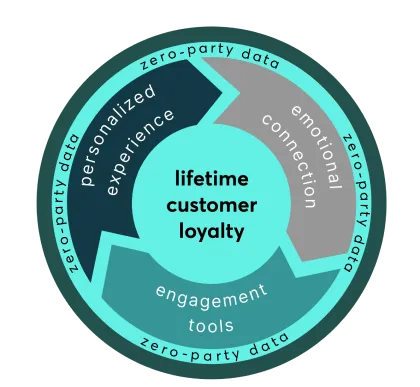By Ivan Dimitrov, Multi-Platform Practice Lead at Tryzens Global The journey toward digital...


By Leanne Franks, Global Head of CX at Tryzens
(This article originally appeared on Inside Retail, a global leader in retail news, analysis, and trends. It is published by Octomedia, one of Australia’s leading B2B publishers.)
Almost every retailer has a loyalty program. Customers collect points for every dollar they spend to earn discounts on future products and services. The exchange is simple: customers get monetary benefits and in return brands get loyal customers. But is the traditional points and perks model really the best way to solidify customer loyalty?
In today’s ultra-competitive digital landscape, loyalty programs are just the beginning of the brand-customer relationship as the digital retail revolution has elevated customer expectations. Loyalty strategies that peak with points and monetary rewards will no longer cut it – especially for younger consumers who expect more interaction with brands before pledging their loyalty.
Through our customer research across multiple retailers, Tryzens has found that younger generations are more likely to see through the transaction-like simplicity of incentivizing them to sign up for an account with the promise of discounts. They expect an excellent customer experience where they are being rewarded at every touchpoint, not just free shipping at checkout or a few points post purchase.
Knowing this, retailers can build an authentic loyalty strategy that maximizes customer lifetime value founded on three fundamental pillars: personalized experience, emotional connection, and engagement – all fueled by valuable zero-party data.

Customers have more choice than ever before. To reduce decision fatigue, what many customers need is guidance toward products and services that are most relevant to them. Personalization has become an expectation for customers – 74% of customers feel frustrated when website content is not personalized. But getting it right is difficult. With separate systems and siloed data, customers’ experiences are often disjointed.
Retailers can power consistent experiences across touchpoints by using a robust customer relationship management (CRM) platform and a powerful customer data platform (CDP) in tandem to inform a broader omnichannel strategy. CRMs help manage customer relationships, while CDPs help manage customer data.
Whilst CRMs help provide a consistent customer interaction at a sales level, a CDP will allow for a single view of the customer that can be accessed and harnessed by the entire organization to drive seamless and personalized CX, as well as supporting customer centric business decisions.
Retailers can analyze their supply of customer data to deepen their personalization capabilities and enhance their omnichannel experience. This helps customers feel understood by the brand and more likely to build a long-term relationship.
Fostering strong emotional connections brings value to both the brand and customer. For brands, fully connected customers are 52% more valuable, according to the Harvard Business Review, which outlines a pathway from “unconnected” to “fully connected”. Forrester research found that when a brand makes a customer feel appreciated, 80% said they would spend more with the brand and 87% would recommend it.
Australia’s leader in authentic and sustainable furniture, Living Edge, has an omnichannel strategy that fosters emotional connections with its customers. It provides thorough self-service support across its website, which handles the base layer of delivery timeframes, FAQs, and store locators. This frees up time for its customer support team to take on the role of personal shoppers. Through live chat, a customer is immediately connected with support that can give style guidance, advising on sizing of furniture, and how pieces fit together.
Engagement tools are used to attract and retain customers, helping retailers cultivate more personalized and impactful experiences in an increasingly cookie-less world using valuable zero-party data.
Many retailers provide customers with customizable preferences so that it remembers how you shop, your styles and your sizes, which power hyper-personalized suggestions. Feedback forms, rating systems, AI-powered chatbots, and surveys integrated across devices and channels all act as zero-party data streams to help optimize your CX and drive loyalty.
One of the barriers to collecting zero-party data is the customer’s willingness to share their feedback and insight. Yet almost 8-in-10 consumers view brands favorably if they seek out and apply customer feedback. Brands can encourage customers by offering rewards for completing a survey or after giving a certain number of ratings.
Don’t neglect a monetary-value points system. They play a crucial role in customers’ lives as they stretch their savings further and encourage repeat purchases. But to build long-lasting loyalty, broaden a points-based system to include other areas of customer experience. Offer service-based and experiential rewards, VIP treatments, personal shopping sessions, and phygital events.
For example, Burberry recently hosted a phygital event in Japan, building brand awareness and encouraging visitors to download their app by using VR to browse the store in search for scattered rewards.
If you’re looking to build a CX-first loyalty strategy, then connect with Tryzens. We implement tailored solutions for many big brands and retailers.